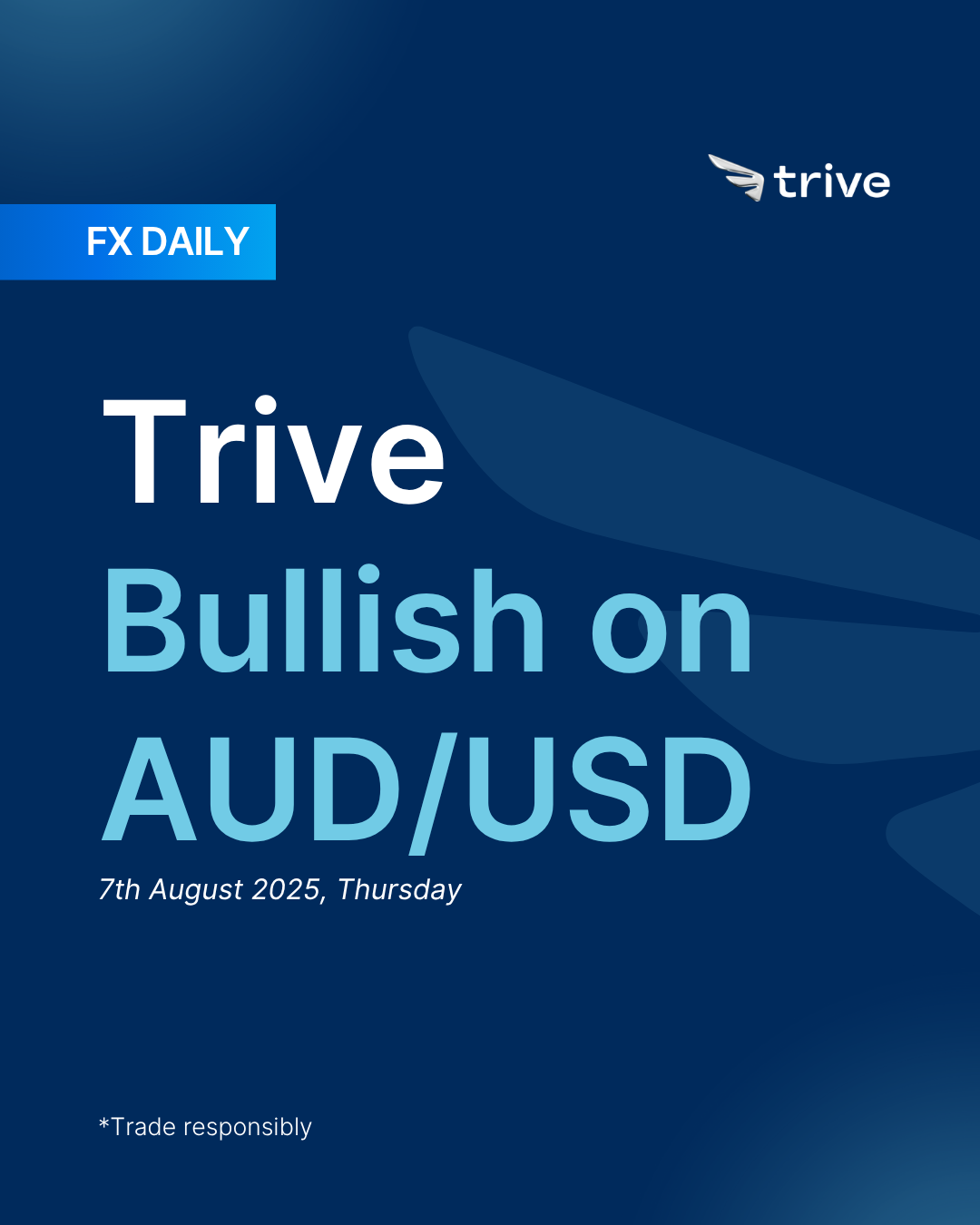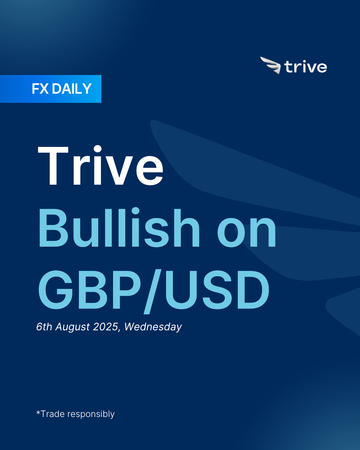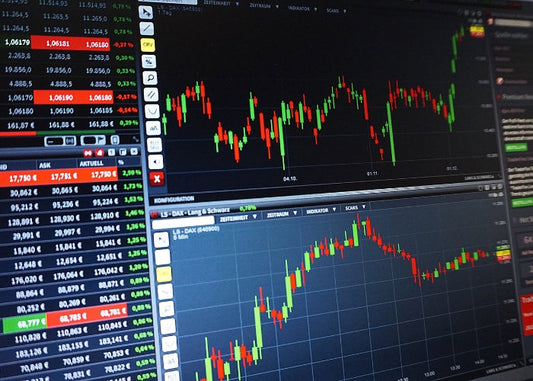FX Daily: Trive Bullish on AUD/USD

The Aussie fell early last week on soft Q2 inflation (2.1% y/y) and weak China PMIs, pushing RBA rate cut odds (91% for August). AUD/USD dropped near 0.6425 before rebounding sharply after a weak US NFP print (73k jobs), which triggered USD selling and a repricing of Fed expectations toward easing. However, AUD gains faded as global risk sentiment remained cautious. Despite strong domestic fundamentals—solid PMIs, retail, housing—external growth concerns (esp. China) still weigh on the currency.
AUD: Waiting for strong risk sentiment
The Australian Dollar faced a week of steady losses, caught between weak domestic data and broader global headwinds before staging a sharp turnaround at the end of the week. AUD/USD dropped below 0.6500 as softer-than-expected Q2 inflation data all but confirmed the likelihood of a rate cut at the Reserve Bank of Australia’s August meeting. This dovish tone was further amplified by disappointing Chinese economic data, which weighed on the growth-sensitive Aussie. The trend abruptly reversed on Friday, when a shockingly weak US Non-Farm Payrolls report triggered a broad collapse in the US Dollar. This reversal sent the Aussie surging off its weekly lows near 0.6425, rebounding toward 0.6500 in a powerful relief rally driven by aggressive dollar selling.
The key domestic catalyst was Wednesday’s Q2 CPI report. Headline inflation slowed to 2.1% year-over-year, down from 2.4%, cementing expectations that the RBA would cut rates in August. Following the release, market pricing for a 25 basis point cut rose to over 90%, putting strong downward pressure on the currency. On the international front, weak Chinese data added to the gloom. China’s official Manufacturing PMI missed expectations on Thursday, and the Caixin PMI fell back into contraction territory at 49.5 on Friday, stoking concerns about regional growth and dragging down the Aussie.
The reversal came after the US jobs report revealed just 73,000 new jobs in July, well below expectations, along with significant downward revisions to previous months. This triggered a major wave of US Dollar selling and repricing of Fed rate expectations. As a high-beta currency, the AUD became one of the primary vehicles for the market’s risk rebound, surging as traders shifted toward pricing in US rate cuts.
On the trade front, Australia managed to avoid the fallout that hit other economies. It was confirmed on Friday that its existing 10% tariff rate would remain unchanged, sparing the country from the steeper tariffs applied elsewhere. While trade policy developments didn’t help the Aussie during the week’s declines, this exemption allowed it to participate fully in the end-of-week rally.
As of Sunday, the markets assign a 91% probability to a 25‐bps rate cut and a 9% probability to a 50‐bps rate cut by the RBA at its August 12th meeting. The interest rate path is almost identical compared to last week, and the markets are pricing in 89‐bps of rate cuts over the next five meetings.
The Australian Dollar faced pressure last week, briefly rallying after a weak US Non Farm Payrolls report before giving up those gains and ending the week lower. This reaction suggests that markets remain uneasy about the broader global outlook. Even though the Fed repricing initially supported the Aussie, the quick reversal was likely due to renewed fears of a global economic slowdown, which tends to weigh on growth sensitive currencies like the AUD.
However, beneath the surface, Australia’s domestic fundamentals remain very strong. Recent macro data has shown impressive resilience: PMIs are in expansion territory, retail sales are solid, housing indicators are firm, and consumer confidence is on the rise. These point to a healthy domestic economy that, under normal global conditions, would support a stronger currency.
The missing ingredient for sustained AUD strength is a risk-on environment. As long as global sentiment remains cautious, particularly around China, the US and Europe, the Aussie may stay under pressure. But if fears of a major global slowdown ease and market appetite for risk assets returns, the AUD is well positioned to perform strongly.
In the short term, the Aussie may stay subdued, but we believe that as global sentiment turns more constructive and the focus shifts toward Fed easing, the Australian Dollar could stage a meaningful rebound over the coming weeks/months.
USD: Rate cut boost
The US Dollar had a rollercoaster week, beginning with strong gains driven by a confident economic outlook and hawkish Fed messaging, only to see that momentum collapse after a disastrous jobs report on Friday. The DXY surged early in the week, breaking above 99.00 as markets responded positively to a US-EU trade deal that was framed as a victory for the US. That bullish tone picked up mid-week after a strong Q2 GDP reading of 3.0% and a hawkish press conference from Fed Chair Powell, who emphasized the Fed’s willingness to act against inflation risks from tariffs. This pushed the Dollar above the 100.00 mark as traders rapidly scaled back expectations for rate cuts.
The mood changed entirely on Friday when the July Non-Farm Payrolls report shocked the market. The headline number came in far below expectations at just 73,000, and revisions to the previous two months were brutal, wiping out a combined 258,000 jobs. The three-month average dropped to only 35,000, signaling a labor market close to stalling. While the unemployment rate rose slightly to 4.2%, wages held firm at 3.9% year-over-year, but this did little to offset the negative surprise. The Dollar dropped sharply, falling back below 99.00, as markets quickly repriced for a September rate cut, ending the week with a dramatic pivot from hawkishness to renewed easing fears.
The strong mid-week momentum was built on a string of supportive data. Alongside the hot GDP print, the ADP employment report beat expectations at 104,000. Core PCE for Q2 came in at 2.5%, slightly above forecast. However, Friday added to the bearish shift as ISM Manufacturing PMI fell to 48.0—below the 50.0 mark that indicates contraction—and its employment sub-index plunged to 43.4. Earlier in the week, other figures showed jobless claims holding low at 218,000, while JOLTS Job Openings and Consumer Confidence offered a mixed but generally stable view of the labor market and consumer sentiment.
Policy-wise, Powell’s press conference was a major turning point. Following an FOMC decision to keep rates unchanged, Powell rejected the idea of a preemptive September cut and said the Fed would prevent tariff-driven price increases from evolving into more serious inflation. Markets took this as a warning that hikes weren’t off the table, which triggered a hawkish repricing. Traders reduced expected cuts for 2025 to just 36 basis points. But after the NFP report, those bets flipped entirely. By Friday, odds of a September cut jumped above 90%, and nearly 60 basis points of easing were priced in by year-end. Comments from dovish Fed members Waller and Bowman, who had dissented in favor of cuts, were also vindicated by the labor data.
President Trump added further pressure by sharply criticizing Powell after the NFP report, calling him a “stubborn MORON” and urging the Fed to cut rates immediately. His attack on the central bank added to the sense of urgency in the market’s response.
Geopolitical tensions also played a role. The week ended with the US imposing sweeping new tariffs on 92 countries, including 35% on Canada and 39% on Switzerland. This raised the average US tariff rate to 15.2%, a steep rise from 2.3% pre-Trump, and worsened global risk sentiment. While the EU-US trade deal was initially welcomed, it was later criticized by European leaders for being unfair, which weighed on confidence. Trade talks between the US and China continued in Stockholm but ended the week without any concrete progress. Meanwhile, tensions with Russia escalated, with Trump issuing threats of secondary sanctions and repositioning nuclear submarines in response to Russia’s rhetoric.
Market sentiment shifted dramatically from optimism about US economic strength to growing fears of a slowdown. The strong start of the week was fueled by upbeat data and a confident Fed. But Friday’s job report and the introduction of broad new tariffs erased that narrative, leading to a risk-off tone. US equities sold off, Treasury yields dropped, and the Dollar tumbled as markets braced for a weaker outlook and likely Fed easing ahead.
As of Sunday, the markets assign a 73% probability to a 25‐bps rate cut and a 27% probability that the Fed will hold rates steady at its September 17th meeting. The interest rate path is considerably lower than last week, and the markets are pricing in 80‐bps of rate cuts over the next five meetings.
In our view, the sharp reversal in the US Dollar last week marks a clear shift in sentiment. After a strong start to the week driven by upbeat data and hawkish Fed rhetoric, the tone completely changed with the July jobs report. The headline NFP miss was bad enough on its own, but the large downward revisions to previous months made it even harder to ignore. To us, it looks like the labor market is losing momentum faster than the Fed anticipated.
Because of that, we now see a September rate cut as the most likely outcome. The Fed had been trying to hold a more cautious tone, especially after Powell’s comments earlier in the week pushing back against rate cuts. But the data doesn’t support that stance anymore, and rate cut expectations have flipped aggressively, and we’re now looking at nearly 60bps of easing priced in by the end of the year.
We don’t believe the US economy is falling off a cliff. Wage growth is still decent, and there’s no sign of a major demand shock. But with job creation slowing and the unemployment rate edging up, the Fed has enough justification to ease in September, especially with ongoing geopolitical risks and rising tariffs starting to bite.
We’re sticking to our bearish baseline bias from last week.
 AUD/USD 4H
AUD/USD 4H
Disclaimer
This material is provided for informational purposes only and does not constitute financial, investment, or other advice. The opinions expressed in this material are those of the author and do not necessarily reflect the views of Trive International. No opinion contained in this material constitutes a recommendation by Trive International or its author regarding any particular investment, transaction, or investment strategy. This material should not be relied upon in making any investment decision.
The information provided does not consider the individual investment objectives, financial situation, or needs of any specific investor. Investors should seek independent financial advice tailored to their individual circumstances before making any investment decisions. Trive International shall not be liable for any loss, damage, or injury arising directly or indirectly from the use of this information or from any action or decision taken as a result of using this material.
Trive International may or may not have a financial interest in the companies or securities mentioned. The value of investments may fluctuate, and investors may not get back the amount they originally invested. Past performance is not indicative of future results.
For more information about Trive International, please visit http://trive.com/int
Additional Information
Investing involves risk, including the potential loss of principal. Diversification and asset allocation strategies do not ensure a profit or guarantee against loss. The content in this material is subject to change without notice and may become outdated or inaccurate over time. Trive International does not undertake any obligation to update the information in this material.
By accessing this material, you acknowledge and agree to the terms of this disclaimer. If you do not agree with these terms, please refrain from using this information.
कोई टिप्पणी नहीं
Home
Trive
TriveHub





0 टिप्पणियाँ